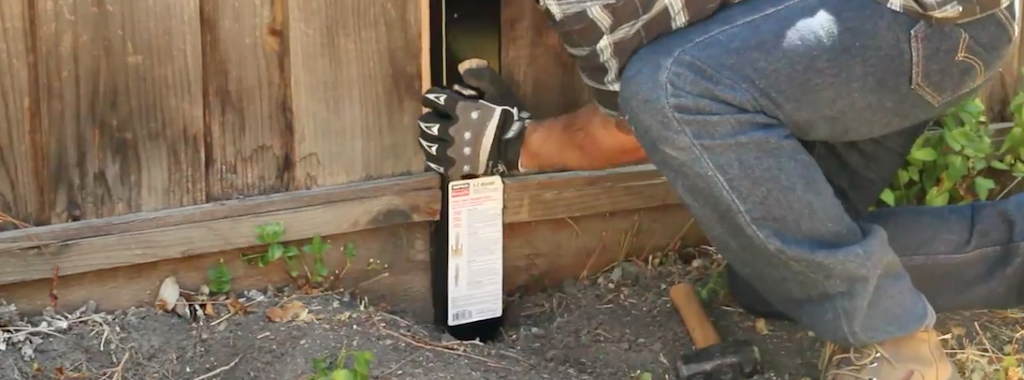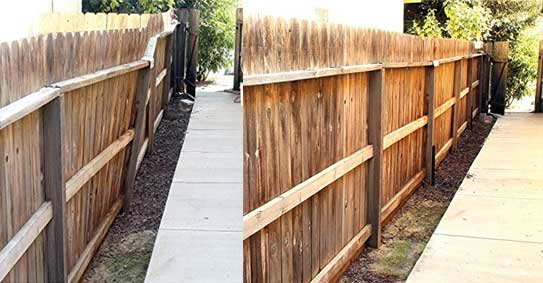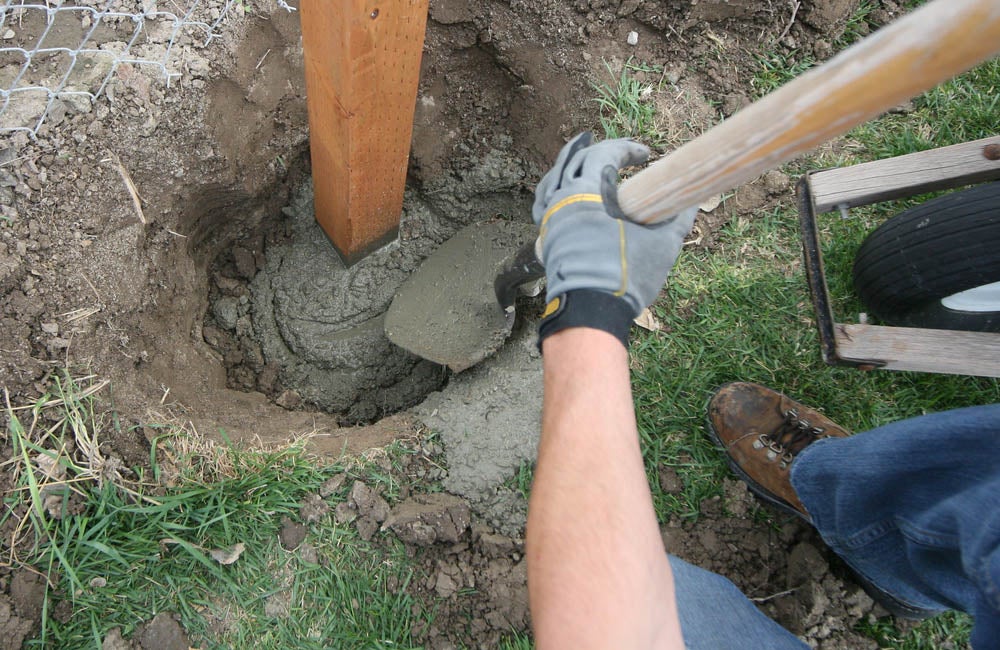Are you tired of looking out your window and seeing a sagging or leaning fence? It’s not only an eyesore, but it can also compromise the security and privacy of your property. But don’t worry, I’m here to help! In this article, we’ll delve into the topic of fence repair and specifically focus on fixing sagging and leaning fences. By the end of this article, you’ll have a better understanding of the causes of these issues and the steps you can take to resolve them. So let’s get started and make sure your fence is sturdy and standing tall!
First, let’s talk about the common reasons why fences start to sag or lean. It could be due to the natural elements like rain, wind, or even the weight of overgrown vegetation. Another factor could be the age of the fence, as wear and tear can weaken its structural integrity over time. Whatever the cause may be, it’s important to address the issue promptly to prevent further damage.
Now, we’ll explore different methods to fix sagging and leaning fences. From reinforcing the posts to adjusting the tension of the fence panels, there are various techniques you can employ. We’ll discuss each approach in detail, highlighting the tools and materials you’ll need along the way. By the end of this article, you’ll have a comprehensive guide to tackling this common fencing problem. So stay tuned for more valuable information on fence repair and ensure your fence stands strong for years to come!
Fence Repair: Fixing Sagging and Leaning
Maintaining a sturdy and visually appealing fence is crucial for the safety and aesthetics of your property. Over time, fences can start to sag, lean, rot, or develop other common problems. Understanding the causes behind these issues and learning the proper repair techniques can help you effectively fix sagging and leaning fences. Whether you choose to hire professionals or tackle the repairs yourself, regular maintenance and preventive measures will extend the lifespan of your fence and save you time and money in the long run.

Types of Fences
Before diving into the fence repair process, it’s important to be familiar with the different types of fences available to homeowners. Each type has its own unique characteristics and requires specific care. Here are some common types of fences:
Wooden Fences
Wooden fences are classic and versatile. They can provide both privacy and security, while also enhancing the appeal of your property. However, wood is susceptible to rot and weather damage over time, requiring regular maintenance and repair.
Metal Fences
Metal fences, such as wrought iron or aluminum, are known for their durability and strength. They offer excellent security and require minimal maintenance compared to other types of fences. However, metal fences can develop rust, which needs to be addressed to maintain their longevity.
Vinyl Fences
Vinyl fences have gained popularity due to their low maintenance requirements and ability to withstand harsh weather conditions. They are resistant to rot, decay, and insect damage. However, vinyl fences can become brittle over time and may need occasional repairs.
Chain Link Fences
Chain link fences are affordable and commonly used for security purposes. While they don’t offer as much privacy as other types of fences, they are low maintenance and durable. However, chain link fences can develop holes and require repairs to maintain their integrity.
Common Fence Problems
No matter the type of fence, certain issues can arise over time. Here are some common problems homeowners may encounter:
Sagging Fences
Sagging fences occur when the fence posts or support structures weaken or shift, causing the entire fence to slump. This can compromise the security and appearance of your fence.
Leaning Fences
Leaning fences are another common problem, often caused by the same issues as sagging fences. A fence that leans can be unsightly and may eventually collapse if not addressed promptly.
Rotting Wood
For wooden fences, rotting wood is a common problem due to exposure to moisture and pests. Rot compromises the structural integrity of the fence and should be repaired to prevent further damage.
Rust on Metal Fences
Metal fences, particularly those made of iron or steel, can develop rust over time. Rust weakens the metal and can lead to structural issues if left untreated.
Holes in the Fence
Chain link fences can develop holes or tears, compromising their security and appearance. Repairing these holes promptly is important to maintain the fence’s functionality.

Causes of Sagging and Leaning
Understanding the causes of sagging and leaning fences is crucial to effectively repairing them. Here are some common causes:
Foundation Issues
Uneven or unstable ground can cause the fence posts to shift or sink, leading to sagging or leaning. Addressing foundation issues can prevent these problems from occurring.
Insufficient or Damaged Fence Posts
Weak or damaged fence posts cannot support the weight of the fence properly, resulting in sagging or leaning. Ensuring the posts are sturdy and undamaged is essential for a stable fence.
Harsh Weather Conditions
Extreme weather conditions, such as heavy winds or storms, can put stress on the fence and cause it to sag or lean. Reinforcing the fence and using appropriate materials can help it withstand these conditions.
Tools and Materials Needed
Before starting any fence repair project, gather the necessary tools and materials. Here are some common items you may need:
Hammer
A hammer is essential for driving nails into the fence and securing various parts together.
Nails
Nails are used to attach wood or metal components of the fence, ensuring stability.
Screws
Screws are often preferred over nails for their added strength and durability.
Level
A level is used to ensure the fence is properly aligned and straight during repairs.
Concrete
Concrete is used to secure fence posts in the ground, providing stability and support.
Fence Brackets
Fence brackets are used to reinforce weak or damaged areas of the fence, improving its strength and stability.

Assessing the Fence Damage
Before beginning any repairs, it’s important to assess the extent of the damage. Here are the steps to assess the fence damage:
Inspecting the Fence
Thoroughly inspect the entire fence, looking for signs of damage, rot, rust, or holes. Take note of any sagging or leaning areas that require repair.
Identifying Sagging or Leaning Areas
Identify specific areas where the fence is sagging or leaning. These areas will need special attention during the repair process.
Measuring the Extent of the Damage
Using a measuring tape, measure the distance by which the fence is sagging or leaning. This will help determine the appropriate repair techniques and materials needed.
Preparing for Fence Repair
After assessing the damage, it’s time to prepare for the repair process. Follow these steps to prepare:
Clearing the Area
Remove any obstacles or vegetation near the fence to create a clear workspace. This will make the repair process easier and safer.
Securing Loose Parts
If any parts of the fence are loose or at risk of falling, secure them temporarily to prevent further damage or accidents during the repair process.
Gathering Necessary Materials
Ensure you have all the necessary tools and materials for the specific repairs needed. This will save time and prevent interruptions during the repair process.

Repairing Sagging Fences
Sagging fences require specific repair techniques to restore their stability and appearance. Here are the steps to repair sagging fences:
Replacing Damaged Posts
Identify and replace any damaged or rotted fence posts. This may involve digging out the old post, installing a new one, and securing it with concrete.
Adding Support Braces
Install support braces along the sagging area of the fence, connecting the fence posts and reinforcing their stability. This can involve using metal brackets, crossbeams, or tension wires.
Adjusting Fence Tension
If the fence has tension wires, adjusting the tension can help straighten and secure a sagging fence. Proper tensioning requires careful adjustment and may require professional assistance.
Repairing Leaning Fences
Leaning fences can be stabilized and straightened using specific techniques. Follow these steps to repair leaning fences:
Straightening and Realignment Techniques
Gradually straighten the fence by applying pressure or using a come-along tool. Realignment may involve adjusting the fence posts or support structures to achieve a vertical position.
Replacing or Reinforcing Fence Posts
If the fence posts are damaged or unable to support the fence, they may need to be replaced. Reinforcing the existing posts with concrete or additional support structures can also help stabilize a leaning fence.

Additional Fence Repairs
Aside from sagging and leaning, other common fence problems may require attention. Here are some additional fence repair tasks:
Replacing Rotting Wood
For wooden fences, replacing rotted sections with new wood is essential to prevent further decay and ensure the fence’s stability.
Repairing Rust on Metal Fences
Remove rust from metal fences using a wire brush or sandpaper, and then apply rust-resistant paint or primer to protect the metal from further corrosion.
Filling Holes in the Fence
Chain link fences with holes or tears can be repaired by patching the damaged area with chain link mesh or using fence repair kits available in the market.
Preventive Maintenance
To prolong the life of your fence and minimize the need for repairs, regular maintenance is crucial. Here are some preventive maintenance practices:
Regular Cleaning and Inspections
Clean your fence regularly to remove dirt, debris, and potential pests. Regular inspections allow you to identify and address any issues early on.
Reapplying Stains or Paints
For wooden fences, reapplying stains or paints every few years helps protect the wood from moisture and UV damage, preventing rot and decay.
Addressing Minor Damage Early
Attend to minor issues promptly to prevent them from becoming major problems. Tighten loose screws or nails, fill small holes, and repair minor damage as soon as it’s noticed.
Hiring Professional Fence Repair Services
While some fence repair tasks can be done as DIY projects, more complex issues may require professional assistance. Here’s what to consider when hiring professional fence repair services:
Choosing a Reliable Contractor
Research and choose a reputable contractor or company with experience in fence repair. Check their licenses, certifications, and read reviews or testimonials from previous clients.
Getting Quotes and Estimates
Obtain quotes and estimates from multiple contractors to compare prices and services. Ensure the quotes include all materials, labor, and any additional charges.
Understanding Contracts and Guarantees
Read and understand the terms and conditions of the repair contract, including warranties or guarantees provided by the contractor. Clarify any doubts or concerns before signing the contract.
DIY Fence Repair Tips and Tricks
If you decide to tackle the fence repairs yourself, here are some tips and tricks for a successful DIY project:
Safety Precautions
Always prioritize safety when working on fence repairs. Wear appropriate protective gear such as gloves, safety goggles, and work boots. Use caution when handling tools and working at heights.
Step-by-Step Repair Instructions
Follow step-by-step instructions or tutorials specific to the type of fence repair you’re undertaking. Consult reliable sources such as tutorial videos, manuals, or professional guidelines to ensure proper techniques.
Budget-Friendly Repair Solutions
Consider cost-effective solutions for fence repairs. For example, salvaging usable parts of the fence, repurposing materials, or opting for DIY-friendly alternatives can help reduce expenses.
Common Fence Repair Mistakes to Avoid
To ensure successful fence repairs, it’s important to avoid common mistakes that can compromise the stability and longevity of the fence. Here are some mistakes to avoid:
Improper Post Installation
Ensure fence posts are properly installed, level, and securely anchored in the ground. Improper installation can lead to leaning or sagging fences.
Poor Quality Materials
Using low-quality materials for the repairs may save money initially but can result in recurring issues. Invest in durable materials that can withstand weather conditions and provide long-term stability.
Ignoring Structural Integrity
When repairing a fence, address not only the visible issues but also assess the overall structural integrity. Strengthen weak areas and ensure the fence is properly supported and aligned.
Conclusion
Repairing sagging and leaning fences is a necessary task to maintain the safety and attractiveness of your property. By understanding the common problems, causes, and proper repair techniques, you can effectively restore your fence’s stability and aesthetic appeal. Whether you choose to hire professionals or take on the repairs as DIY projects, regular maintenance and preventive measures will extend the lifespan of your fence and save you time and money in the long run. Remember, a well-maintained fence not only enhances your property’s security but also adds value to your overall investment.
For more information on fence repair, maintenance, and other fence-related topics, visit our website FenceDude.org. Our blog covers various aspects of fencing, providing valuable insights, tips, and tricks to help you make informed decisions about your fence.